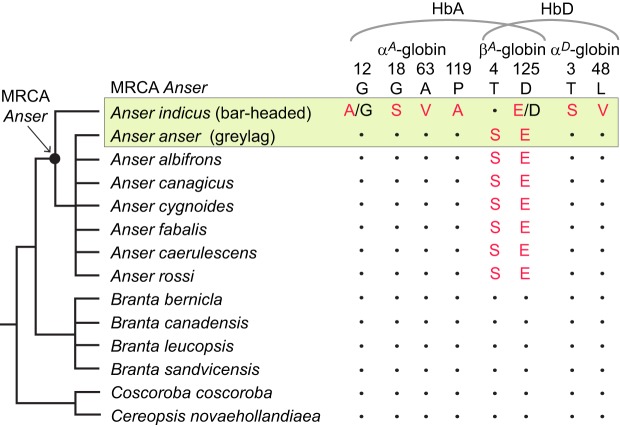Fig. 1.
Amino acid replacements at eight sites that distinguish the HbA and HbD isoforms of the high-flying bar-headed goose (Anser indicus) and the strictly lowland greylag goose (Anser anser). Amino acid residues at the same sites are shown for 12 other lowland waterfowl species in the subfamily Anserinae and the most recent common ancestor (MRCA) of the genus Anser (see Natarajan et al., 2018). Given the known phylogenetic relationships of these 12 waterfowl species, the multiple alignment clearly indicates that all amino acid replacements in αA- and αD-globin were specific to the bar-headed goose lineage, whereas the βA-globin replacements occurred in the common ancestor of greylag goose and all other lowland Anser species after divergence from the bar-headed goose. In addition to the six fixed differences in the three adult-expressed globin genes (four affecting HbA and two affecting HbD), bar-headed geese harbor low-frequency allelic polymorphisms at two sites, αA12(Gly/Ala) and βA125(Asp/Glu) (Hiebl et al., 1987; McCracken et al., 2010; Oberthür et al., 1982).

